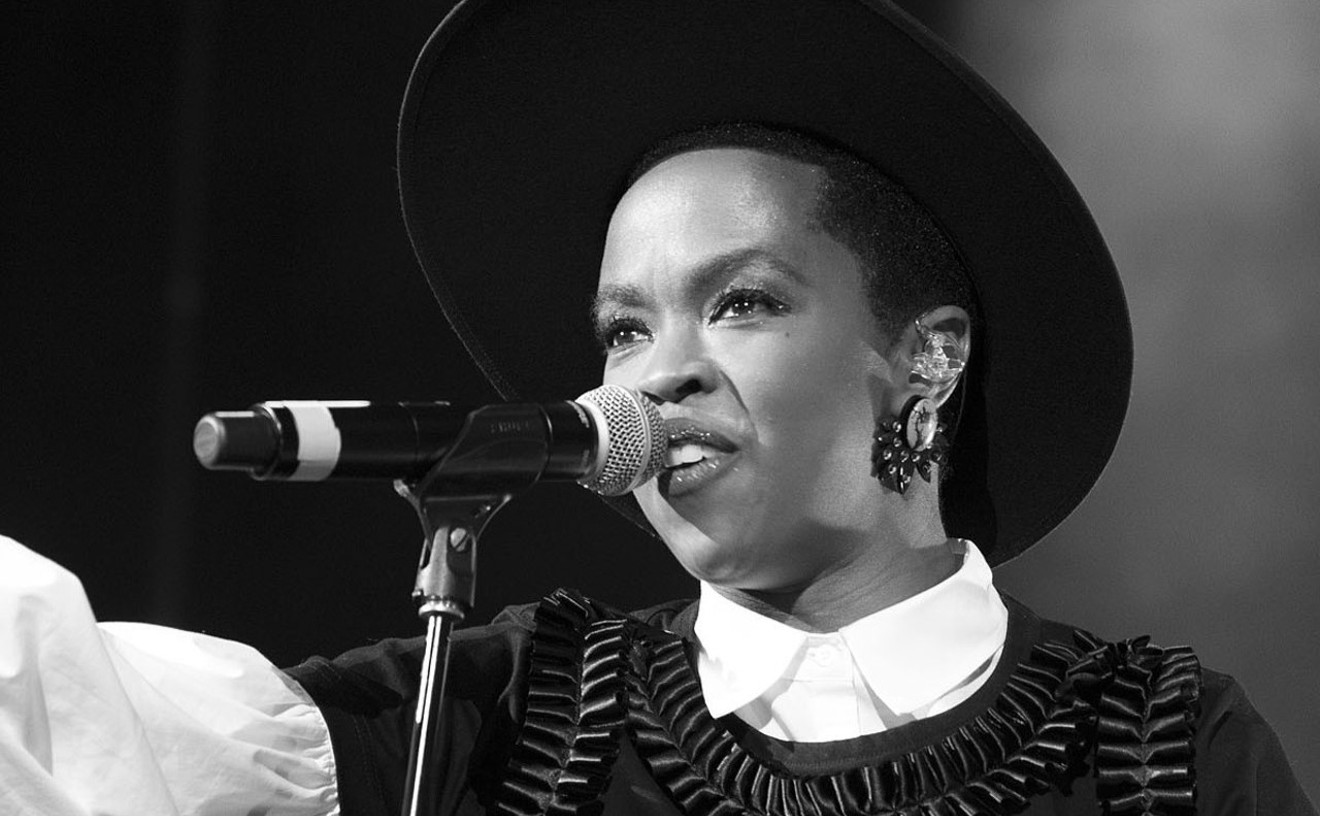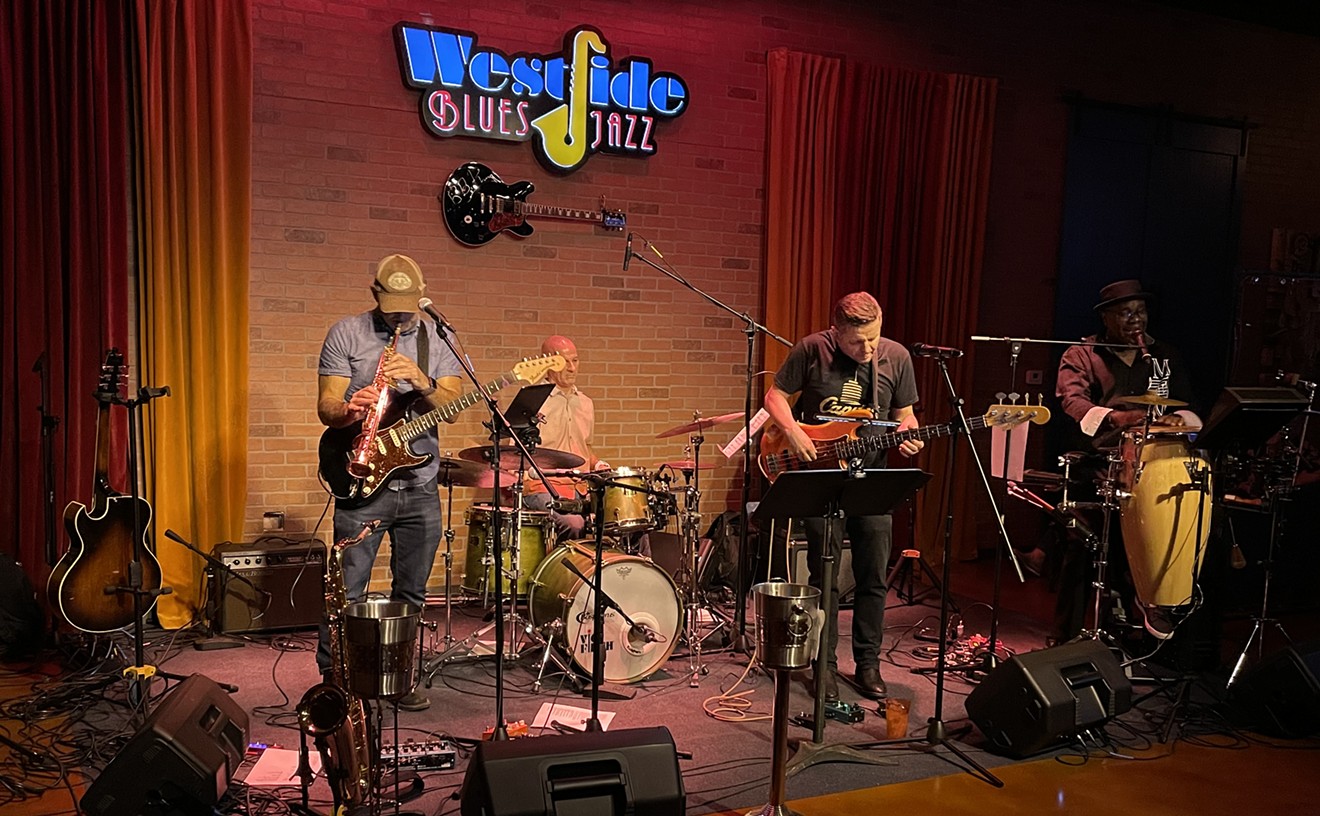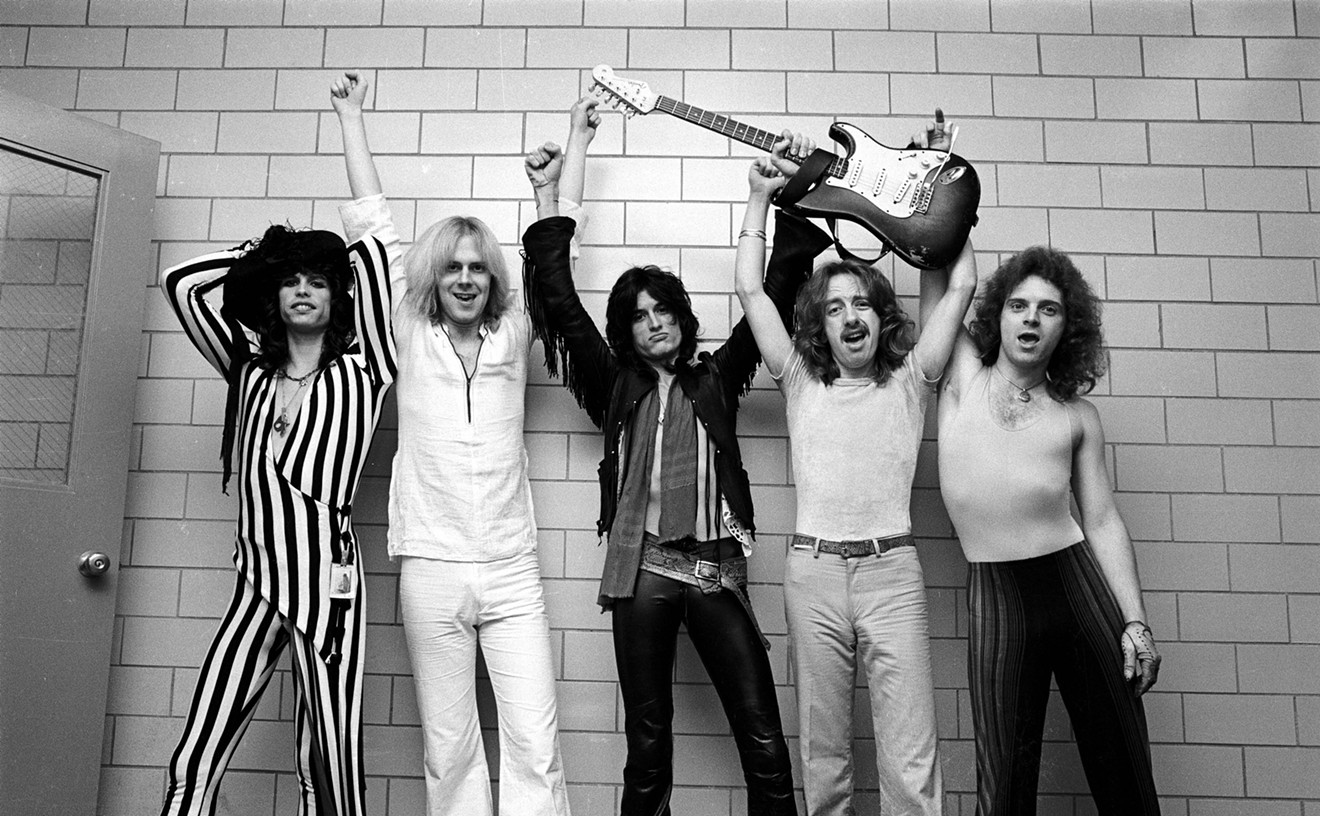Rest peaceful and easy, Glenn Frey.
Last year, when Don Henley opened his tour in Phoenix, we tried to get to the bottom of why so many people who love country rock hate the band that had the most success with it, that being The Eagles. Which is an understatement, since the band's Greatest Hits (1971–1975) is the biggest all-time selling album by an American act, just behind Michael Jackson's Thriller.
So I just asked people.
Those who said they loved The Eagles just told me how much they loved the music.
Those who said they hated The Eagles, just hated them as people. Some just parroted The Big Lebowski, saying "I hate the fuckin' Eagles" while refusing to single any Eagle out. Henley haters quoted Mojo Nixon. But a lot of people really had it in for Glenn Frey.
All you have to do is sit through the History of the Eagles documentary and you feel like punching him instead of taking it easy. And sometimes with good reason. Frey is always at the center of every inter-band altercation. The tempestuous exits of Don Felder and Bernie Leadon were both reactions to Frey's smug puss egging them on.
One guy I asked about hating the Eagles said flat-out said, "Glenn Frey is a punk." And he meant it in pre-1976 terms, when calling someone a punk meant they were worthless.
Frey was hardly worthless, and if we're being truthful was probably closer to being more of a punk rocker than whatever snarls and sneers in a leather jacket now.
But the Eagles needed a punk, and not the kind who was gonna die young like Gram Parsons did before The Flying Burrito Brothers reached their potential. It took persistence to soar as high as the Eagles did, and Frey was a big part of the altitude they cruised at for those eight years. No amount of hate can take away what they achieved in a few short years together.
Yeah, Frey was a punk, but he did contribute plenty to our culture before dying yesterday of pneumonia, rheumatoid arthritis, and ulcerative colitis. It's left for you and I to decide whether we're the better for it or not.
So c'mon baby, don't say maybe!
1. First Recording Appearance on "Ramblin' Gamblin' Man" (1968)
Sometimes it's easy to forget Frey originally came from the Motor City and he was a pivotal though little mentioned contributor to this early Bob Seger classic. His acoustic guitar is audible just below the steadfast, half-opened hi-hat — you can hear the occasional upstroke going in the opposite direction. But you can't miss his harmonies, even while being distracted by these gyrating chickaroos. Seger would return the favor by co-writing "Heartache Tonight."
2. Helped put Winslow, Arizona on the Map (1972)
Even though Jackson Browne wrote the bit about "standing on the corner of Winslow, Arizona," it was Frey that added the part about the girl slowing down to take a look at him that made the song a more carefree song. And it's not a contribution taken lightly by the Winslow, Arizona Chamber of Commerce, which commissioned a bronze statue of a musician near a mural of a flat-bed Ford to make up their Standing On The Corner Park. But never mind that. Listen to the band playing this live. They used to call The Eagles' forefathers Crosby, Stills, Nash & Young the American Beatles but they were never a self-contained group, rather more like four songwriters sharing a rhythm section. The Eagles are that self-contained model, and on this TV appearance you can't help but be impressed to hear the harmonies and the instrumentation live, even with Berrnie Leadon doing his banjo trills on a Telecaster and sounding more spontaneous than the Eagles would ever be accused of being again.
3. "Tequila Sunrise" (1973)
Written by Frey and Don Henley. The best song about a hangover, made better by the fact that it is so mellow you can enjoy it even while suffering from a hangover.
4. "Lyin' Eyes" (1974)
The best cheating song because it covers all the bases. The cheating woman, the young boy she's cheating with, and the rich old man she's cheating on all get equal coverage, although the woman seems to carry all the blame, which would provide ample evidence for people who'd wish to paint the Eagles as misogynists.
5. "One of These Nights" — One the First and Best Disco Crossover Hits (1976)
Preceding "The Hustle" at number one (and succeeded by the Bee Gees' first disco hit "Jive Talking"), the Eagles were the first American rock band to score to score a number one with a disco crossover hit. Only Elton John had beaten them to the top spot with a rock disco hit, and like the Bee Gees after him, Sir Elton would bend his sound to fit the confines of disco with "Philadelphia Freedom." But the Eagles' tune incorporated a blues-based guitar solo and the customary country rock harmonies that would be alien to disco and created something entirely different, maybe something closer to what you'd hear in country music now. Written by Henley and Frey, one would have to concede this song would be nothing without the contributions of Don Felder and Randy Meisner, two men who outlived their usefulness to the Eagles organization at varying points in time.
6. Kicking Critics' Asses and Taking Names (1977)
Far from being press darlings, they used to get routinely skewered by critics, especially by little digs in Rolling Stone's Random Notes. Incensed by the unfair coverage they challenged the mag to a softball game just to be able to kick their asses in broad daylight without incurring a lawsuit.
7. "Hotel California," the American "Stairway to Heaven" or "Sgt. Pepper" (1977)
You've heard Tejano bands play this song. You've heard rappers sampling this song, nearly inspiring Don Henley to write "Bring Me the Head of Frank Ocean" until his lawyers seized on the "cease and desist" idea. And you've seen crazy clergy people pointing out satanic messages hidden on the sleeve, like "Paul is dead" zealots and finding Satan ("Natas" to you!) in the grooves backwards.
8. Frey Brought Inter-Band Fighting onto the Stage (1980)
My favorite part of History of The Eagles: About an hour and 50 minutes in when Glenn Frey starts to talk about his desire to kill Don Felder for snubbing Senator Alan Cranston. Sure, Mick Avory of the Kinks almost decapitated Dave Davies with one of his flying cymbals during an onstage, bout but here, Frey, like a smug schoolyard bully, ratchets up the tension with in-between-song banter at the Long Beach benefit for Cranston for the whole coliseum to hear. Charmers like "Three more songs, you asshole. I'm gonna fuckin' kill you. I can't wait." Woah! That even got Joe Walsh's attention! The backstage battle never happened. Frey reports that Felder smashed his "cheapest guitar" and split the arena before Frey's fist could connect with Felder's face. The group never recovered from that show, splitting up for 14 years, and I for one can never hear "Somebody's gonna hurt someone before the night is through" the same again.
Glenn Frey - Smuggler`s Blues Video (1985) from MTVClassic1 on Vimeo.
9. Brought Drug Smuggling Into our Living Rooms (1985)Frey won an MTV Video Music Award in 1985 for his music video for "Smuggler's Blues," which in turn became the basis for a Miami Vice episode, in which Glenn guest-starred. But Frey wouldn't get an awards for this job, where instead of playing the smuggler, he plays a pilot who talks about playing the guitar a lot. I know that could be one of several Elvis movies!
10. Frey was the First Rock Star to Sell Fitness (1988)
Frey was at both ends of the being ripped like a rock star spectrum. At the height of their life lived in the fast lane, you could say Frey was like the Brian Jones of the Eagles, always the one who looked the meanest and most wasted in band photos. This fact Frey himself would capitalize on when he became a Jack LaLanne spokesperson and needed compelling "Before" pictures to contrast with his pumped-up new physique in 1988.
By this time he was on better speaking terms with Rolling Stone, discussing his 1,500 sit-ups a day, five days per week routine and what it took to get him from the fast lane to the fast track to losing fat with Jack LaLanne. "They offered me a shitload of money," he told the former hippie mag, adding, "I do not cling to this antiquated hippie mentality that says it's us against them. I personally do not consider Pepsi-Cola or Old Style Beer or the Health and Tennis Corporation to be the enemy. This is the age of adult rock stars."










